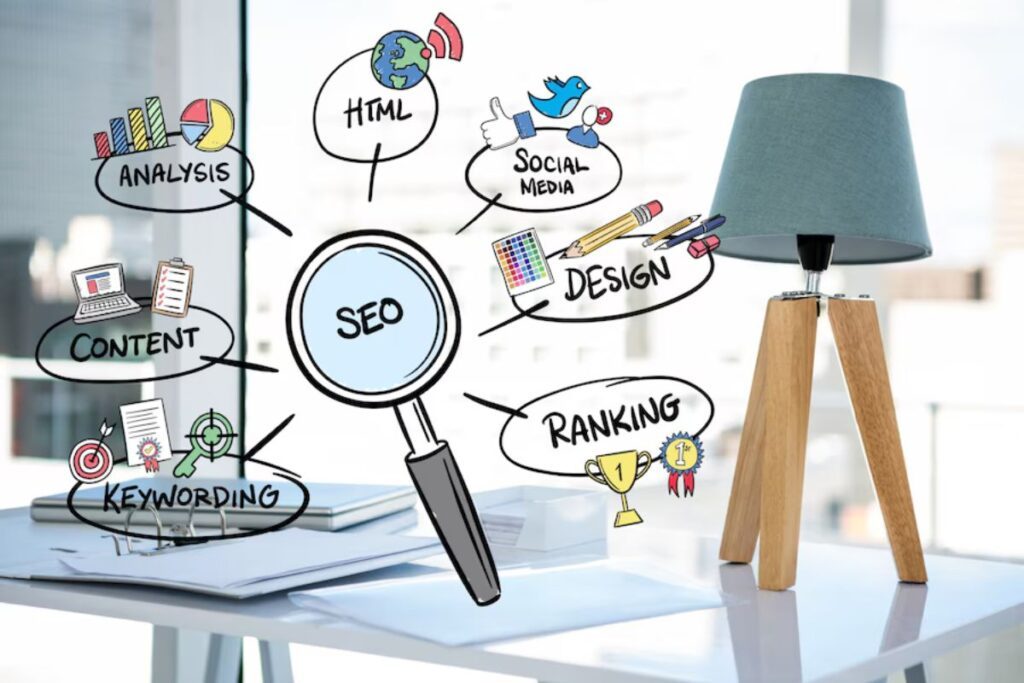Copywriting is an art form that can make or break a marketing campaign. One of the ongoing debates among copywriters is whether short, snappy pieces with lots of white space work better than long, detailed narratives. The answer to this debate often concerns one key question: What type of buyer are you targeting?
Understanding the types of buyers and how to cater to their needs can significantly enhance your copywriting effectiveness. Let’s explore the two primary buyer types and how you can craft compelling copy that appeals to both.
Understanding the Types of Buyers
The Impulsive Buyer
The impulsive buyer has “places to go and people to see,” but not enough time to do it. This buyer typically skims headlines, subtopics, photos, and captions, making quick decisions based on a cursory glance.
Characteristics of the Impulsive Buyer
- Quick Decision Makers: They don’t have the time or patience for detailed information.
- Visual Learners: They respond well to images, bold text, and clear calls to action.
- Emotion-driven: Their purchasing decisions are often based on emotional triggers rather than logical analysis.
Strategies to Reach the Impulsive Buyer
- Attention-Grabbing Headlines and Subheadlines: Use bold and compelling headlines to capture their attention instantly.
- Effective Use of Graphics: Enhance your message with relevant photos, captions, and varying font sizes. This not only grabs attention but also conveys information quickly.
- Highlight Key Information: Use shaded areas, bold fonts, and bullet points to highlight the most important information.
- Clear and Concise Messaging: Keep your messages short and concise to cater to their speed needs.
The Analytical Buyer
On the other hand, the analytical buyer thrives on details. This group believes that “the proof is in the details” and will read everything, including the fine print. They require comprehensive information to make informed decisions.
Characteristics of the Analytical Buyer
- Detail-Oriented: They need extensive information to feel confident about making a purchase.
- Logic-Driven: Their decisions are based on logic, data, and thorough analysis.
- Patient and methodical: They read through all available information before deciding.
Strategies to Reach the Analytical Buyer
- Detailed Information: Provide in-depth details under appropriate headings to satisfy their need for thorough information.

- Structured Content: Use the same headlines, subheadlines, and graphics designed for the impulsive buyer as guides. Under each, include the detailed information the analytical buyer seeks.
- Evidence and Proof: Include testimonials, data, case studies, and detailed descriptions to support your claims.
Crafting a balanced copy
Successful copywriting should address the needs of both impulsive and analytical buyers. By understanding the nuances of each type, you can create content that engages both, regardless of length.
Step-by-Step Guide to Balanced Copywriting
- Start with a Strong Headline: Your headline should be intriguing enough to capture the attention of the impulsive buyer while promising enough to pique the interest of the analytical buyer.
- Subheadlines as Guides: Use subheadlines to break up the text and guide both types of buyers through the content.
- Use Visual Elements: Incorporate photos, infographics, and varied typography to maintain the interest of the impulsive buyer. Ensure these elements are relevant and add value to the content.


- Provide Detailed Sections: Under each subheadline, offer detailed information that the analytical buyer will appreciate. This could include specifications, benefits, case studies, and other comprehensive data.
- Bullet Points and Highlights: For key takeaways, use bullet points and highlights to cater to the quick-scanning habit of the impulsive buyer.
- Calls to Action: Ensure your call to action (CTA) is clear and compelling. Use persuasive language that appeals to both types of buyers.
Practical Examples
An Example of an Impulsive Buyer
Headline: “Transform Your Home in 5 Minutes with These Stunning Decor Tips!”
- Subheadline: Quick Tips for a Beautiful Home
- Bullet Points:
- Use Bold Colors: Instantly brighten up your living space with vibrant cushions and throws.

- Statement Pieces: Add a unique touch with a bold, eye-catching statement piece.
- Quick Rearrangements: Simple furniture rearrangements can dramatically change the look and feel of a room.
Example of an Analytical Buyer
Headline: “The Ultimate Guide to Home Decor: Transform Your Living Space with Proven Strategies”
- Subheadline: Comprehensive Tips for a Beautiful Home
- Detailed Sections:
- Color Psychology: Explore how different colors affect mood and how to use them effectively in your home decor.
- Choosing the Right Furniture: An in-depth analysis of various furniture styles and how to select pieces that complement your space.
- DIY Projects: Step-by-step guides on DIY decor projects that can enhance your home’s aesthetic.
Leveraging inside knowledge
Knowing your potential buyers and how they react is the key to grabbing their attention and driving conversions. The overlap in the needs of impulsive and analytical buyers is a bonus for you, the copywriter. Addressing both in your copy increases the chances of resonating with a broader audience, ultimately boosting your success.
Advanced Techniques for Engaging Both Buyers
Storytelling
Storytelling is a powerful tool in copywriting. It creates an emotional connection with your audience, making your message more memorable. Moreover, stories can captivate both impulsive and analytical buyers.
- For Impulsive Buyers: Quick, engaging anecdotes can draw them in emotionally.
- Detailed stories with data and outcomes can satisfy analytical buyers’s information needs.
Testimonials and social proof
Building credibility is essential. Testimonials and social proof can bridge the gap between impulsive and analytical buyers.
- Quick Reviews: Short, impactful reviews can influence impulsive buyers.
- Detailed Case Studies: Comprehensive case studies with data and results can convince analytical buyers.
Scarcity and Urgency
Creating a sense of urgency can prompt immediate action. However, it’s important to balance this without being too pushy.
- Limited-Time Offers: Highlighting limited-time offers can drive impulsive decisions.
- Exclusive Deals: Providing detailed information about exclusivity and benefits can help analytical buyers make decisions quickly.
Personalization
Tailoring your content to specific needs can significantly boost engagement. Using data and analytics can help personalize your messaging.
- Customized Recommendations: Offer personalized product recommendations based on user behavior.
- Behavioral Targeting: Use analytics to understand your audience’s preferences and tailor your content accordingly.
Conclusion
Recap of Key Points: Understanding and addressing the needs of both impulsive and analytical buyers is crucial for effective copywriting. You can create content that resonates with a wider audience by using a balanced approach that includes attention-grabbing headlines, detailed information, visual elements, and clear calls to action.
Final Thoughts: Effective copywriting is all about balance. Combining techniques that cater to different buyer types can enhance your marketing efforts and drive better results.
Call to Action: Ready to take your copywriting to the next level? Start applying these techniques today and watch your conversions soar!
SEO Enhancements
Keyword Optimization
Ensure the keywords are naturally integrated throughout the content without keyword stuffing. Use related keywords and variations to broaden the content’s SEO reach. For instance:

- SEO Copywriting: Mention this keyword in the introduction and scatter it within the content.
- Engaging Content: Use this phrase while discussing strategies to capture attention.
- Copywriting Strategies: Integrate this keyword in headings and subheadings for better visibility.
- Copywriting Tips: Naturally insert this keyword while providing practical examples.
- Online Earning Tips: Mention this while discussing the benefits of effective copywriting.
- Marketing Strategies: Use this keyword in sections related to advanced techniques.
- Advertising Techniques: Mention this while discussing how to appeal to different buyer types.
- Impulsive Buyer: Use this keyword in sections specifically dealing with impulsive buyer strategies.
- Call to Action: Naturally, integrate this phrase while discussing the importance of clear CTAs.
- Detailed Copywriting: Mention this keyword while discussing strategies for analytical buyers.
Meta Descriptions
Create a compelling meta description that includes key phrases and entices users to click. For example:
“Discover two must-know copywriting secrets that guarantee success! Learn how to craft content that appeals to both impulsive and analytical buyers. Boost your copywriting skills today.”
Internal and external links
Add links to other relevant articles on your site and authoritative external sources to provide additional value and improve SEO.
- Internal Links: Link to other articles on your site related to copywriting, marketing strategies, and online earning tips.
- External Links: Link to authoritative sources such as industry studies, credible blogs, and expert opinions to enhance the content’s credibility.
Engaging Writing Style
Incorporate transition words and phrases to improve the flow of the article. Use a friendly, conversational tone to make the content more relatable and engaging. Address the reader directly, posing questions to encourage engagement.
Questions and Interactive Elements
Pose questions to the reader to encourage engagement. For example:
- “Have you ever wondered why some ads catch your attention instantly while others don’t?”
- “Do you prefer detailed information when making a purchase, or are you more impulsive?”
Consider adding interactive elements like polls or short quizzes, if applicable, to increase reader interaction and dwell time on the page.
By leveraging these techniques and optimizing your content for SEO, you can create an informative and engaging article that resonates with your audience and boosts your online presence. Happy writing! As a copywriter, refining your skills and staying current with industry trends are important.
Frequently Asked Questions (FAQs)
What is the primary goal of copywriting?
The primary goal of copywriting is to persuade the reader to take a specific action, such as purchasing, signing up for a newsletter, or clicking a link. This is achieved by crafting compelling, engaging content that resonates with the target audience.
How can I write content that appeals to both impulsive and analytical buyers?
It’s crucial to balance emotional and logical elements in your content to appeal to both impulsive and analytical buyers. Use engaging stories and quick reviews to capture the attention of impulsive buyers while providing detailed case studies, data, and thorough explanations to satisfy the needs of analytical buyers.
Why is SEO important in copywriting?
SEO (Search Engine Optimization) is essential in copywriting because it helps your content rank higher on search engine results pages (SERPs), making it more visible to potential readers and customers. Optimized content drives organic traffic, improves your online presence, and enhances the overall effectiveness of your copywriting efforts.
How can I create a sense of urgency without being too pushy?
You can create a sense of urgency by highlighting limited-time offers or exclusive deals, using countdown timers, and emphasizing scarcity (“only a few items left”). However, ensure that the urgency feels natural and is backed by genuine. Reasons to avoid appearing overly aggressive or insincere.
What are some effective ways to build credibility through copywriting?
Building credibility can be achieved through the use of testimonials, social proof, and authoritative external links. Quick, impactful reviews can sway impulsive buyers, while comprehensive case studies with data and results can convince analytical buyers. Additionally, linking to credible sources enhances the trustworthiness of your content.
How can I personalize my content for better engagement?
Personalization can be achieved through customized recommendations based on user behavior and preferences. Utilizing data analytics allows you to understand your audience better and tailor your messaging accordingly. Addressing the reader by name and suggesting products or services that align with their interests are effective personalisation methods.
What are some common mistakes to avoid in copywriting?
Common mistakes in copywriting include overloading content with jargon, failing to address the target audience’s needs, ignoring SEO best practices, lacking clear calls to action, and using a monotone or impersonal writing style. Avoiding these pitfalls can significantly improve the impact and effectiveness of your copy.
By addressing these frequently asked questions, you can better understand the nuances of effective copywriting and apply proven strategies to enhance your content’s performance.


